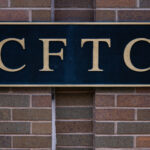Iran Monday raised its earthquake death toll to 306, a day after rescuers called off the search for survivors from the rubble of their homes in the country’s northwest, state media reported.
Health Minister Marzieh Vahid Dastjerdi told a session of parliament that the number jumped by about 50 after victims expired in the hospital. More than 3,000 people were injured in the twin earthquakes that struck two days ago, she added in comments broadcast on state radio.
In one hamlet visited by AP Television News near the village of Bajeh Baj, 13 miles west of one of the epicenters, furniture peeked out from under piles of bricks and collapsed roof timbers while men sorted through debris, trying to salvage what little was left of their households.
Residents say the earthquake killed 35 people living in the simple dwellings surrounded by mountains. Dried earth was left split wide open from the force of the shock, which cut some houses in two and left the wall of one standing only where it was propped up by a refrigerator.
The death toll included some 219 women and children, Dastjerdi said, adding that around 2,000 injured people had been released from hospitals soon after the quake since they had only minor injuries.
Dastjerdi said her ministry has deployed scores of ambulances and medics to the region but still needs helicopters to transfer seriously injured people quickly.
Authorities say old, heavy roofs without frames were largely responsible for the death toll in the rural areas.
Scores of aftershocks have coursed through the region since the 6.4 and 6.3 magnitude quakes hit the area, home to some 300,000 people in a 2,300-square-mile (6,000-square-kilometer) borderland near Azerbaijan and Armenia.
The quakes hit the towns of Ahar, Haris and Varzaqan in East Azerbaijan province. At least 12 villages were totally leveled, and 425 others sustained damage ranging from 50 to 80 percent, state TV and news agencies reported.
Many roads and other infrastructure were heavily damaged. State TV showed relief workers distributing tents and helping survivors, mainly in rural areas.
Meanwhile Iran’s Red Crescent Society said the country does not need any foreign aid.
Spokesman Pouya Hajian told semiofficial ISNA news agency that the International federation of Red Cross and Red Crescent, UNICEF, Turkey, Taiwan, Singapore, Germany and many embassies in Tehran had offered help but that the Iranian Red Crescent is able to support the quake-stricken areas.
The head of Red Crescent Society of in the quake-struck province also said international aid was not needed.
The ISNA report added that Iran has sent back a rescue team from Turkey that had arrived in the region without advance coordination.
Iran is located on seismic fault lines and is prone to earthquakes. In 2003, some 26,000 people were killed by a 6.6 magnitude quake that flattened the historic southeastern city of Bam.
Was this article valuable?
Here are more articles you may enjoy.

 FEMA Denies Washington State Disaster Relief From Bomb Cyclone, Governor Says
FEMA Denies Washington State Disaster Relief From Bomb Cyclone, Governor Says  Nearly 24 Firms Seek Deal With CFTC to Settle Enforcement Cases
Nearly 24 Firms Seek Deal With CFTC to Settle Enforcement Cases  In Fight Over Insurance, Neighbors Crowdsource LA Fire Contamination Data
In Fight Over Insurance, Neighbors Crowdsource LA Fire Contamination Data  UAW Joins Critics Slamming RFK Jr.’s Cuts to Worker Safety Unit
UAW Joins Critics Slamming RFK Jr.’s Cuts to Worker Safety Unit 